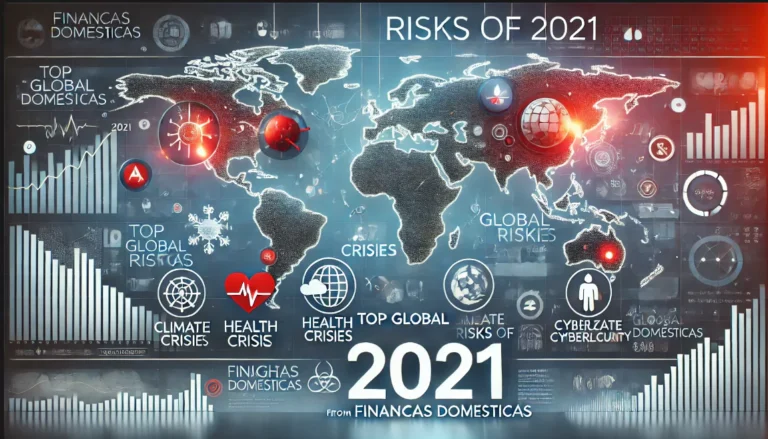What is Blockchain Technology? A Comprehensive Guide
In the ever-evolving digital age, blockchain technology has emerged as a revolutionary innovation with the potential to transform industries worldwide. From cryptocurrencies like Bitcoin to secure supply chain management, blockchain is at the heart of the decentralized future. But what exactly is blockchain technology, and how does it work? This article delves deep into blockchain’s core concepts, applications, benefits, and its potential to reshape industries.
The Basics of Blockchain Technology
Definition of Blockchain
At its core, blockchain is a distributed ledger technology (DLT) that records transactions across multiple computers in a secure, transparent, and immutable manner. Unlike traditional centralized systems, blockchain operates without a central authority, making it decentralized and resistant to fraud or manipulation.
Key Characteristics of Blockchain
- Decentralization: Data is stored across a network of computers (nodes), eliminating the need for a central server.
- Transparency: Every participant in the network can view the entire ledger.
- Immutability: Once data is recorded, it cannot be altered or deleted without consensus.
- Security: Cryptographic techniques ensure the data’s integrity and prevent unauthorized access.
How Does Blockchain Work?
Blockchain functions as a chain of blocks, where each block contains:
- Data: This could include transaction details, timestamps, or other relevant information.
- Hash: A unique identifier (similar to a fingerprint) for the block, generated using cryptographic algorithms.
- Previous Block’s Hash: Linking blocks together ensures the chain’s integrity.
Steps in a Blockchain Transaction
- Initiation: A user requests a transaction.
- Verification: Nodes in the network validate the transaction using consensus mechanisms like Proof of Work (PoW) or Proof of Stake (PoS).
- Recording: Once validated, the transaction is added to a new block.
- Chain Update: The block is added to the blockchain, and all nodes update their copies of the ledger.
This process ensures transparency, security, and decentralization, making blockchain a trusted technology for various applications.
Types of Blockchains
Blockchain systems can be categorized based on their accessibility and governance:
1. Public Blockchain
- Description: Open to anyone; no central authority controls it.
- Examples: Bitcoin, Ethereum.
- Use Cases: Cryptocurrencies, decentralized applications (dApps).
2. Private Blockchain
- Description: Operated by a single organization, offering restricted access to participants.
- Examples: Hyperledger, R3 Corda.
- Use Cases: Supply chain management, enterprise solutions.
3. Consortium Blockchain
- Description: Controlled by a group of organizations rather than a single entity.
- Examples: Energy Web Foundation, Quorum.
- Use Cases: Collaborative industry solutions like banking or healthcare.
4. Hybrid Blockchain
- Description: Combines public and private features, allowing selective data sharing.
- Examples: Dragonchain.
- Use Cases: Real estate, retail, and regulatory compliance.
Applications of Blockchain Technology
Blockchain is no longer limited to cryptocurrencies. Its versatility has paved the way for numerous real-world applications:
1. Cryptocurrencies
Blockchain’s most famous application is powering digital currencies like Bitcoin, Ethereum, and Ripple. These currencies operate without a central bank, offering transparency and security in financial transactions.
2. Supply Chain Management
Blockchain enables real-time tracking and verification of goods, ensuring transparency and reducing fraud in supply chains. Companies like IBM and Walmart use blockchain to enhance supply chain efficiency.
3. Smart Contracts
Smart contracts are self-executing agreements with pre-set conditions coded directly into the blockchain. They eliminate intermediaries, ensuring faster, more cost-effective transactions.
4. Healthcare
Blockchain secures patient data, streamlines healthcare processes, and ensures drug authenticity. Applications include electronic health records and clinical trials management.
5. Finance and Banking
Blockchain enables secure cross-border payments, faster settlements, and fraud reduction in the financial sector. JPMorgan Chase’s Quorum blockchain is a notable example.
6. Real Estate
By tokenizing real estate assets, blockchain facilitates seamless buying, selling, and property management, reducing paperwork and improving transparency.
7. Voting Systems
Blockchain-based voting systems can enhance election security, prevent fraud, and increase voter turnout through verifiable digital ballots.
8. Intellectual Property and Copyright
Blockchain provides a secure platform to register and manage intellectual property rights, ensuring creators retain ownership and receive royalties.
Advantages of Blockchain Technology
1. Enhanced Security
Blockchain’s cryptographic algorithms make it nearly impossible to hack or tamper with, ensuring data integrity.
2. Transparency
Every transaction is recorded and visible to participants, fostering trust among users.
3. Reduced Costs
By eliminating intermediaries, blockchain reduces transaction costs across various industries.
4. Faster Transactions
Blockchain streamlines processes, enabling real-time settlements and reducing delays.
5. Decentralization
Decentralized networks minimize the risks associated with central points of failure, enhancing system reliability.
6. Increased Efficiency
Automating processes through smart contracts reduces manual errors and operational inefficiencies.
Challenges of Blockchain Technology
Despite its potential, blockchain technology faces several challenges:
1. Scalability
Current blockchain networks, like Bitcoin, struggle with processing large volumes of transactions quickly.
2. Energy Consumption
Consensus mechanisms like PoW require significant computational power, leading to environmental concerns.
3. Regulation
The lack of global regulatory frameworks creates uncertainty for businesses adopting blockchain.
4. Privacy Concerns
While blockchain is transparent, this can sometimes conflict with privacy requirements, especially in sensitive industries.
5. Adoption Barriers
Many organizations face challenges in integrating blockchain into existing systems due to technical complexities and costs.
Future of Blockchain Technology
Blockchain’s future is bright, with ongoing advancements promising to address its current limitations:
1. Transition to Energy-Efficient Mechanisms
Emerging consensus algorithms like Proof of Stake (PoS) and Proof of Authority (PoA) aim to reduce energy consumption.
2. Integration with AI and IoT
Combining blockchain with Artificial Intelligence (AI) and the Internet of Things (IoT) will unlock new possibilities in automation, data sharing, and decision-making.
3. Expanding Use Cases
Beyond finance and supply chain, blockchain is expected to revolutionize sectors like education, entertainment, and governance.
4. Government Adoption
Countries worldwide are exploring blockchain for secure voting systems, land registries, and digital currencies. China’s Digital Yuan and El Salvador’s Bitcoin initiatives are notable examples.
How to Learn Blockchain Technology
To leverage the opportunities blockchain offers, individuals can explore various learning paths:
1. Online Courses
Platforms like Coursera, Udemy, and edX offer beginner to advanced blockchain courses.
2. Certifications
Industry-recognized certifications, such as the Certified Blockchain Expert (CBE) or IBM Blockchain Developer, enhance credibility.
3. Community Participation
Joining blockchain forums, hackathons, and meetups provides hands-on experience and networking opportunities.
4. Building Projects
Practical experience, like developing dApps or contributing to open-source projects, accelerates learning.
Conclusion
Blockchain technology is a transformative force reshaping industries, economies, and the way we interact with digital systems. Its decentralized, transparent, and secure nature has unlocked countless possibilities, from revolutionizing finance to enhancing healthcare and governance.
While challenges remain, ongoing innovation and adoption trends ensure that blockchain will play a pivotal role in shaping the future. Whether you’re a tech enthusiast, an entrepreneur, or a professional, understanding blockchain’s potential is essential to staying ahead in the digital era.
Dive into this revolutionary technology today and become part of the decentralized future!
For More Information, Check out More Articles on NetworkForbe






